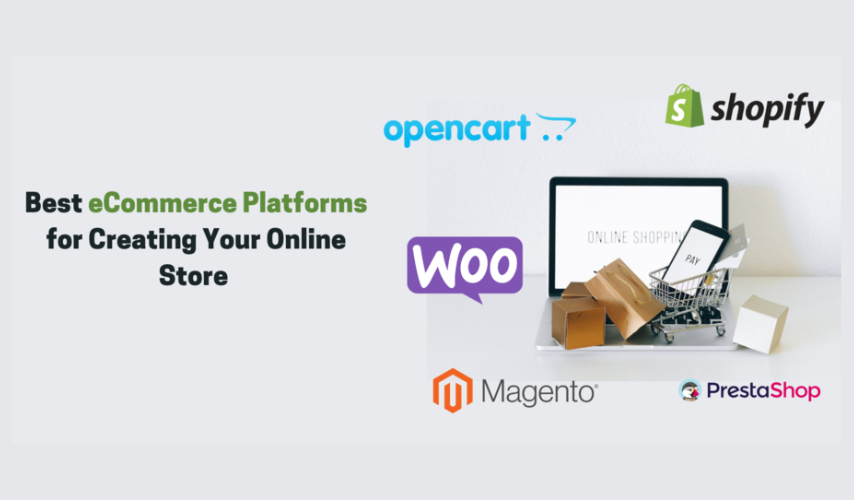The eCommerce industry has seen unprecedented growth in a relatively short period and is looking to cement itself as a great revenue stream. It reached around US$ 5.7 Trillion in market value in 2022, and the CAGR is expected to hover at the 56% mark. All you need to be successful in the eCommerce domain is a great online store that your customers want to visit and buy from. You can create one using any one of the best eCommerce platforms available in the market.
However, not all eCommerce development platforms are created equal, with some having features and price points more suitable to your needs than others. And then there’s also the question of the language used to build your eCommerce website. PHP has become the de facto website-building language due to its many advantages, especially for creating eCommerce websites.
Finding all of this can get challenging and complex. As a solution, this guide has you covered by simplifying each PHP eCommerce platform’s characteristics to help you make an informed decision.
What Is PHP and Why Is It Preferred for Web Development?
PHP (Hypertext Preprocessor) is an open-source scripting language that is used for dynamic web development and applications on the server side. Created in 1994, it has gone on to become the most popular of its kind, with 79% of websites currently having used it for development.
PHP is so ubiquitous because it is capable of doing anything that is related to the server side of a web application. This includes extracting data from forms, generating dynamic web page content, database management, cookie management, session creation, sending emails, etc. It also ensures data security via its many hash functions that let one encrypt user data.
Being open-source also means that PHP doesn’t cost anything to use. There are PHP frameworks that provide an easy way to develop anything you want, along with post-development tools like web analytics that can help gain insight into its performance. The popularity and open-source nature of PHP have also led to a massive community worldwide that can help you with any issue regarding its usage.
Therefore, it is an all-in-one tool that web developers and eCommerce platforms rely on to create stunning and fully-functional websites and applications.
The Top eCommerce Platforms to Create Your Online Store Using PHP
- WooCommerce
WooCommerce is one of the most commonly used eCommerce development platforms, powering over 5 million eCommerce websites, giving it an overall market share of 29%. It is an eCommerce plugin attached to WordPress Content Management System that allows the latter to gain eCommerce functionalities like inventory, shipping, and other pertinent management. It is free to use but you should have WordPress hosting in place for it. Its speed and free-to-use characteristics, along with its connection to the most popular CMS in the world make it one of the best eCommerce platforms for web development.
The Pros:
- It’s free to use
- Easily customizable
- Works with WordPress
- Renders smooth movements in the interface
- Is secure
- Helps create a great shopping cart
- Can add multiple payment gateways securely
- No limit on the number of products or categories
- It is regularly updated
- Strong community support via both itself and WordPress
The Cons:
- Must update it regularly so that WordPress can work with the latest iterations of browsers and mobile platforms, along with maintaining security.
- WordPress and WooCommerce cannot be separated, so you should have a WordPress-based website.
- Needs professional developers to accurately render the content so that there is no mismatch between the preview and final output on the webpage.
- Some customization themes can be expensive, with only the basic ones being free.
- Magento
Magento is a web development platform that has built-in PHP and has been created for the exclusive purpose of building eCommerce websites. It has seen large swathes of eCommerce professionals migrate to it, and as of 2020, had a share of 20.4% of the market. It stands among the top 3 most used eCommerce development platforms due to its simplicity and rich set of features tailored for the purpose. It is accepted as a priority by those that want a stable, secure, and long-term eCommerce website.
The Pros:
- It is a free and open source
- You can choose any web hosting service you want
- It is mobile friendly
- Easy and plentiful third-party application integration
- Makes websites easy to use with fast load times
- Has Magento SEO that helps with advanced website SEO
- Contains an easy-to-use CMS of its own.
- A large community of professionals worldwide
- Comes with a built-in Intelligent Product filter that searches the cloud and monitors user behavior to help improve product suggestions.
- Contains a built-in cross-selling option to add products that are related to buyer’s references.
- Has advanced security features with constant updates
The Cons:
- Need the expertise to select one of the over 200 databases it contains.
- A shared usage structure could make for slow performance
- Magento 1 has a lot of extensions not available in Magento 2. Extensions may have to be purchased in Magento 2.
- The community edition is free but its Enterprise Edition costs a lot.
- Magento frameworks are relatively complex.
- Tools like Data migration are still under development
3. Shopify
If you’re in the eCommerce space, then you would have heard of Shopify. Such is the popularity of this platform, and it has plenty of reasons for its large market share of 35.46%. It has a comprehensive bundle of dedicated eCommerce features that let you easily create feature-rich and user-friendly web pages. It has been used to create websites of over 500K in 175 countries, and that count is increasing by the day. It is the platform for building PHP-based stable and fast eCommerce websites that makes online shopping easy for both admins and shoppers alike.
The Pros:
- It is fast and secure
- Supportive technical team
- Plenty of built-in marketing tools
- Has a cloud-based hosting support mechanism
- Auto cleaning of data errors like duplicates
- Lots of third-party plugins
- Has its payment gateway; can also integrate others.
- Produces visually-appealing storefronts
The Cons:
- It is not free and prices go up sharply with more features you add
- Plugins and themes can be expensive, over and above the regular usage fee
- Lack of an easy approach to support those outside the developed world.
- The steep learning curve, especially with its set of jargon.
- Comparatively limited customizability
- Poor content management, so no addition of videos and other marketing material
- Customers can’t use discounts on multiple products unless you use the paid Shopify app.
- Hosting leaves your online store vulnerable to Shopify’s decisions on this feature’s operation.
4. OpenCart
As the name suggests, this platform is a free, open-source PHP-based eCommerce web development platform. It works best for small-time eCommerce businesses because of its simplicity, but can also support businesses of any size. It is customizable and contains support for a host of add-ons, including over 40 payment gateways and 10 shipping methods that you can integrate. It takes a modular approach to make it easy to create an eCommerce website for even novices. It is the platform to build a professional and stable eCommerce store.
The Pros:
- Lots of Plugins
- Free to use and supports PHP
- Modularity makes development and post-development upgrades easy
- A plethora of out-of-the-box features, including 14,000 additional extensions
- Helps customers easily view order status and history for easy monitoring
- Easy learning curve
- Can render easily on even slow connections
- Large support community distributed globally
The Cons
- Responses to queries can be slow
- Script code update to its newer version post its purchase on Open cart may make some of its features malfunction
- Having a large number of products can slow down the site unless optimized.
5. PrestaShop
PrestaShop is an open-source eCommerce platform based on PHP and supporting the MySQL database management system. It has gained popularity in recent years, with around 297,000 websites using it, making up a noticeable chunk of the total websites present. It is available in over 60 countries and has a large support base too. Its claim to fame is its ease of use features, including direct download and installation in your preferred hosting site. Websites created sign it has good response times and easy manageability.
The Pros:
- Provides great catalog and sitewide management
- Effective SEO
- Automation of follow-up emails
- Multiple payment gateway integration
- Responsive both on the front and backend
- Supports the languages of over 60 countries
- Large global community of developers for support
- Renders well on slow connections too as it’s lightweight.
- Convenient and a feature-rich dashboard that allows admission to easily add or remove items and functionalities.
- It’s free and open source, allowing for a lot of customizability
The Cons:
- Need to purchase themes to make the most out of the platform
- It’s developer-friendly but not as user-friendly, requiring some coding knowledge to make the most of it.
- Upgrades are infrequent and can render modules non-functional post upgrades.
- It’s best for small-time users and it may struggle to support large businesses.
Conclusion
The combination of PHP frameworks and eCommerce web development platforms provides the ultimate foundation for any kind of eCommerce entrepreneur to set a strong foot in the industry. If your goal is to increase your profit margins and take your online store to new places in achieving its objectives, you should consider saving on costs with quality results. To achieve this, it is advisable to hire eCommerce developers in India or other such developing countries. By doing so, you get additional benefits like low development costs and quick turnaround times along with quality website creation.








